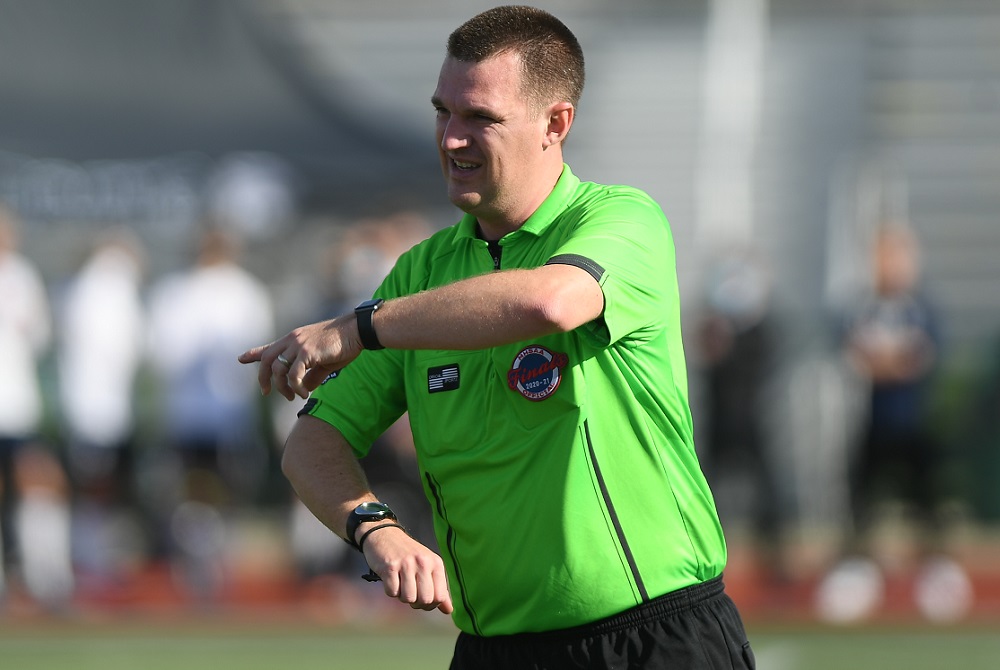
Be the Referee: Soccer Disallowed Goal
By
Sam Davis
MHSAA Director of Officials
October 21, 2021
Be The Referee is a series of short messages designed to help educate people on the rules of different sports, to help them better understand the art of officiating, and to recruit officials.
Below is this week's segment – Soccer Disallowed Goal - Listen
A soccer team is racing towards the opponent’s goal, and after a couple of nice passes, they find the back of the net for a one-nothing lead.
As soon as the goal celebration starts, the coach of the team that scored excitedly motions for one of his players to come off the field. The assistant referee sees and hears this and counts the number of players on the field – and he realizes that the scoring team had 12 players on the field at the time of the goal. What’s the call?
The referee should disallow the goal because there were too many players on the field, and re-start the game with a goal kick by the team that was scored on. The extra player on the field receives a yellow card, and the score is back to 0-0 … or nil-nil.
Previous editions
Sept 30: Field Goal Falls Short - Listen
Sept. 23: Volleyball Obstruction - Listen
Sept. 16: Catch or No Catch - Listen
Sept. 9: Intentional Grounding – Listen
Sept. 2: Pass Interference – Listen
Aug. 26: Protocols and Mechanics – Listen

Be the Referee: Soccer Timing
By
Sam Davis
MHSAA Director of Officials
September 20, 2022
Be The Referee is a series of short messages designed to help educate people on the rules of different sports, to help them better understand the art of officiating, and to recruit officials.
Below is this week's segment – Soccer Timing - Listen
One of the biggest complaints people make about professional soccer is never knowing how much time is really left in the game. The clock counts up from zero, and the referee can add time at their discretion.
But that’s not the case in high school soccer.
To start with, halves are 40 minutes, not 45. The clock starts at 40 and counts down. And when players are injured and the ball is not in play, the clock will stop and then restart when action is ready to continue.
In the last five minutes of the game, the clock stops for substitutions by the leading team, so a coach can’t stall by sending in a new player. When the clock hits zero and the buzzer sounds … the game is over. There’s no guessing how much added time there is – the end of the game is the end of the game.
Previous Editions:
Sept. 13: Volleyball Replays - Listen
Sept. 6: Switching Sides - Listen
Aug. 30: Play Clock - Listen
Aug. 23: Intentional Grounding Change - Listen

